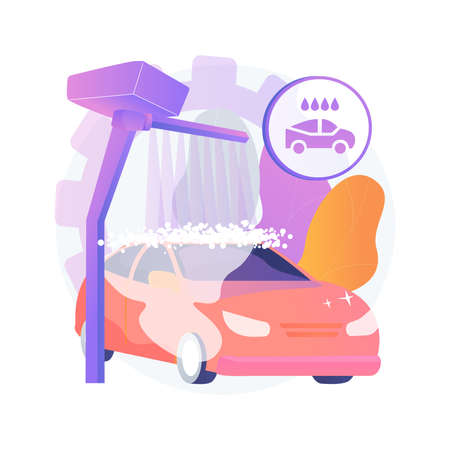1. Understanding the Risks of Night Driving in India
Driving at night on Indian roads comes with a distinct set of risks that every driver should be aware of before starting their journey. Unlike daytime driving, night travel presents challenges such as unpredictable traffic conditions, sudden appearance of stray animals, and frequent movement of heavy vehicles like trucks and lorries. Most Indian highways and rural roads are poorly lit, making visibility a major concern and increasing the chances of missing road hazards or sharp turns. Additionally, long-distance journeys—common in India due to intercity travel norms—often mean drivers spend hours behind the wheel without adequate rest. Combined with erratic driver behavior and lack of proper lane discipline, these factors contribute to fatigue and heighten the danger of falling asleep while driving at night. Recognizing these unique challenges is the first step towards staying alert and safe when travelling after dark on Indian roads.
2. Preparation Before the Journey
Proper preparation is crucial for safe and comfortable night driving in India. Taking a few practical steps before you start your journey can significantly reduce tiredness and minimise the risk of falling asleep at the wheel. Here are some essential tips to help you get ready:
Get Adequate Sleep
Never underestimate the importance of a good night’s rest before a long drive, especially at night. Adults need at least 7-8 hours of sleep to feel refreshed and alert. Avoid starting your journey if you feel drowsy or have not had enough rest, as fatigue slows reaction time and impairs decision-making.
Plan Your Route and Rest Stops
Map out your route using Google Maps or trusted Indian navigation apps like MapmyIndia. Identify dhabas, petrol pumps, or rest areas along the way where you can take breaks. Plan to stop every 2-3 hours or whenever you feel even slightly tired. Here’s a quick reference table for common rest options on Indian highways:
| Type of Rest Stop | Facilities Available | Recommended Use |
|---|---|---|
| Dhabas | Food, chai, washrooms, local ambience | Refresh and energise with snacks and tea |
| Petrol Pumps | Fuel, basic washrooms, air check | Quick pit stops, refuelling vehicle & self |
| Motel/Lodge | Beds, showers, meals | For longer rest if feeling very sleepy |
Prepping Your Vehicle for Night Travel
- Check headlights, tail lights, indicators, and fog lamps for proper functioning.
- Ensure your windshield is clean both inside and out to avoid glare from oncoming vehicles.
- Top up fluids (engine oil, coolant, windshield washer) and check tyre pressure.
- Keep emergency supplies like water bottles, first-aid kit, torchlight (battery), and basic tools handy.
Pro Tip: Carry Some Essentials
Packing a small bag with dry fruits, biscuits, chewing gum (for alertness), bottled water, and a power bank can make your journey smoother. Also, keep your driving licence, vehicle papers (RC Book), PUC certificate, and insurance handy in case of checks by local police.
Summary
A well-rested driver with a properly prepped vehicle and planned route is less likely to face fatigue or unexpected troubles during night drives in India. Taking these simple yet effective steps ensures you reach your destination safely and comfortably.

3. Staying Alert Behind the Wheel
Staying awake and focused during night drives on Indian roads can be challenging, but there are several tried-and-tested tips and local habits that can help keep you alert. One of the most popular ways is to sip hot chai at regular intervals. The strong taste and caffeine in Indian tea offer a quick energy boost, and you will find many roadside dhabas open late where you can stop for a fresh cup. It’s also wise to munch on light snacks like roasted peanuts, namkeen, or biscuits instead of heavy meals that can make you drowsy. For those travelling with friends or family, engaging in lively conversations helps pass time and keeps your mind active. Many Indian drivers also recommend playing energetic Bollywood music – catchy beats and familiar tunes can do wonders to lift your spirits and shake off sleepiness. If you’re driving alone, consider tuning into popular FM radio stations or playlists with upbeat Hindi or regional songs. Remember, these small practices not only help in staying awake but also make your journey more enjoyable and safe.
4. Recognising Signs of Fatigue
When driving at night in India, it’s crucial to recognise the early signs of tiredness before they become dangerous. Given the unpredictable road conditions, long stretches of highway, and varied lighting on Indian roads, being alert is essential for your safety and that of others. Ignoring the warning signals can lead to microsleep episodes or serious accidents, especially with the added challenges of animals on the road or sudden obstacles.
Common Signs You Are Getting Tired While Driving
| Sign | Description |
|---|---|
| Yawning Frequently | You notice you are yawning repeatedly within a short span. |
| Heavy Eyelids | Your eyes feel heavy, and you find it hard to keep them open. |
| Difficulty Focusing | It becomes harder to concentrate on the road or read signboards. |
| Lane Drifting | You unintentionally move out of your lane or have trouble maintaining a straight path. |
| Poor Memory | You cannot recall the last few kilometres driven or miss key turns/landmarks. |
| Irritability | You feel easily annoyed by traffic jams, honking, or other drivers’ actions. |
| Delayed Reactions | Your response time to braking or changing signals slows down noticeably. |
Why Early Recognition is Important in India
India’s unique road environment makes it even more critical to admit drowsiness early. Many highways lack proper lighting, villages often have unmarked speed-breakers, and unexpected obstructions like stray cattle can appear suddenly. If you wait until you are very tired, your ability to react quickly is severely compromised—putting yourself and others at risk.
Admitting you are getting tired is not a sign of weakness; it’s a responsible decision that can prevent mishaps. In Indian culture, there may be pressure from friends or family members travelling with you to “keep going,” but it’s always better to stop safely rather than push through fatigue.
If you notice any of these warning signs while driving at night, take them seriously. Pull over at a safe dhaba (roadside eatery), take a break, wash your face with cold water, or even nap for 15-20 minutes if necessary. Recognising and acting on fatigue early ensures your journey is safer and more comfortable for everyone involved.
5. Safe Rest Practices on Indian Highways
When driving long distances at night in India, it is crucial to prioritise your safety and well-being by planning proper rest stops. Indian highways offer several options for safe resting, but you need to know where to look and what practices to follow.
Finding Safe Places to Rest
Always keep an eye out for dhabas, which are roadside eateries commonly found along highways. Not only do dhabas provide fresh chai and snacks, but they also allow travellers a place to stretch, use clean washrooms, and take short breaks. Toll plazas are another reliable option as they are usually well-lit, have security personnel around, and sometimes even designated parking areas for travellers who wish to rest for a while. If you’re driving on expressways, look for official rest areas or fuel stations that remain open 24/7.
The Importance of Power Naps
If you feel drowsy or find your concentration slipping, do not hesitate to pull over at a safe spot and take a power nap. Even a quick 20-minute nap can recharge your mind and body, making a significant difference in your alertness levels. Remember, it’s far better to reach your destination a little late than risk an accident due to fatigue.
Stretching Breaks: A Must-Do
Besides napping, use every stop as an opportunity to get out of the car and stretch. Simple exercises like walking around the vehicle, touching your toes, or rotating your shoulders can improve blood circulation and help fight off sleepiness. Encourage all passengers to do the same; it makes the journey healthier for everyone.
By making smart choices about where and when to rest—be it at a trusted dhaba, toll plaza, or rest area—you ensure not just your own safety but also that of others on the road. Regular breaks, power naps, and stretching are small steps that go a long way in keeping night driving in India safe and comfortable.
6. Alternative Options: Sharing the Drive or Public Transport
If you find night driving in India too exhausting or risky, it’s wise to consider alternative options that prioritize your safety and comfort. Carpooling with friends or family is a practical solution, as sharing the driving responsibilities can help everyone stay alert and reduce fatigue. If you have a long journey ahead, hiring a professional driver is another popular choice in India; experienced drivers are used to Indian roads at night and can handle challenging situations better. For those who prefer not to drive at all, opting for trusted overnight bus or train journeys can be both convenient and restful. Many reputable transport companies offer sleeper buses and trains equipped with basic amenities, allowing you to relax or even sleep during your travel. In metro cities like Mumbai, Bangalore, and Delhi, overnight Volvo buses are known for their punctuality and safety standards. Remember, sometimes the best way to avoid tiredness behind the wheel is to let someone else do the driving altogether. By considering these alternatives, you not only reduce your risk of accidents due to drowsiness but also make your night journey across India more comfortable and stress-free.


